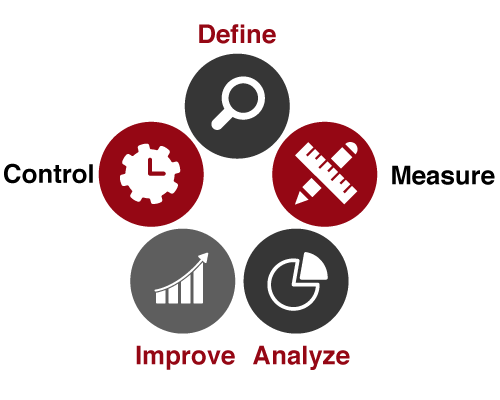According to Bright Hub PM, just two years after adopting the Six Sigma strategy, GE gained $700 million in corporate benefits. Welch applied Six Sigma in four key ways that ultimately translated to a formula for success:

—
How General Electric used six sigma to transform their company
General Electric is one of America’s most recognizable brands.
How did it get here? Probably by deciding that it wasn’t going to be an average company. On its site, the company points out that globalization and technological advancement have changed the way consumers do business. Today’s consumers have access to instant information, meaning there’s little room for error.
To compete with the rest of the world, innovators at GE knew they needed to be more than average. They needed to be exceptional so in the late 1980s, the company began focusing solely on quality control. In 1995, CEO Jack Welch made a goal for GE to become a Six Sigma company within five years by adopting the “Six Sigma Quality” as a part of the company’s culture.
What does Six Sigma mean to a company like GE? It means measuring the number of defects in your company processes to “systematically” determine how to reduce error and get as close to perfect efficiency as possible. According to the statistical formula behind Six Sigma, the process must only have 3.4 “defects” per million opportunities or chances for error. Obviously, this requires something very close to perfection.
According to Bright Hub PM, just two years after adopting the Six Sigma strategy, GE gained $700 million in corporate benefits. Welch applied Six Sigma in four key ways that ultimately translated to a formula for success:
1. Training: GE required almost all employees to take a two week, 100-hour Six Sigma Training Program. Afterward, employees were asked to complete a project implementing those methodologies.
2. Mentoring: Mentoring was key to GE’s success. Full-time, Master Black Belt Six Sigma professionals were required to train and mentor employees whose jobs were integral to key processes. After those employees were trained and mentored to become Black Belts as well, GE Black Belt teams carried out different Six Sigma projects within the company. Green Belts were also able to join projects teams to a certain capacity.
3. Leadership: Welch also asked for a commitment to their Six Sigma goals from both executives and the GE workforce, linking promotions and bonuses to improvement in quality. A Green Belt certification became a minimum requirement for promotion at GE and almost half of each area of bonuses depended on the successful implementation of a Six Sigma project. Even the CEO and President attended training sessions.
4. Focused Implementation: GE used three key implementation approaches.
“Show Me the Money” meant GE focused on the bottom line, cutting costs to compete in price-sensitive markets.
“Everybody Plays” meant that even outsourced suppliers were expected to participate in the Six Sigma initiative to make sure that the quality was assured from start to finish for each product.
“Specific Techniques” meant GE used process maps and other Six Sigma tools to rank and associate projects with overarching business goals. & improve
Contact Info:
Name: Jennifer Holbus
Email: Send Email
Organization: Mysixsigmatrainer.com
Address: 1100 W Peachtree St NE Suite #200, Atlanta, GA 30309, United States
Phone: +1-404-793-0778
Website: https://mysixsigmatrainer.com
Source: PressCable
Release ID: 89083686
If you detect any issues, problems, or errors in this press release content, kindly contact error@releasecontact.com to notify us. We will respond and rectify the situation in the next 8 hours.